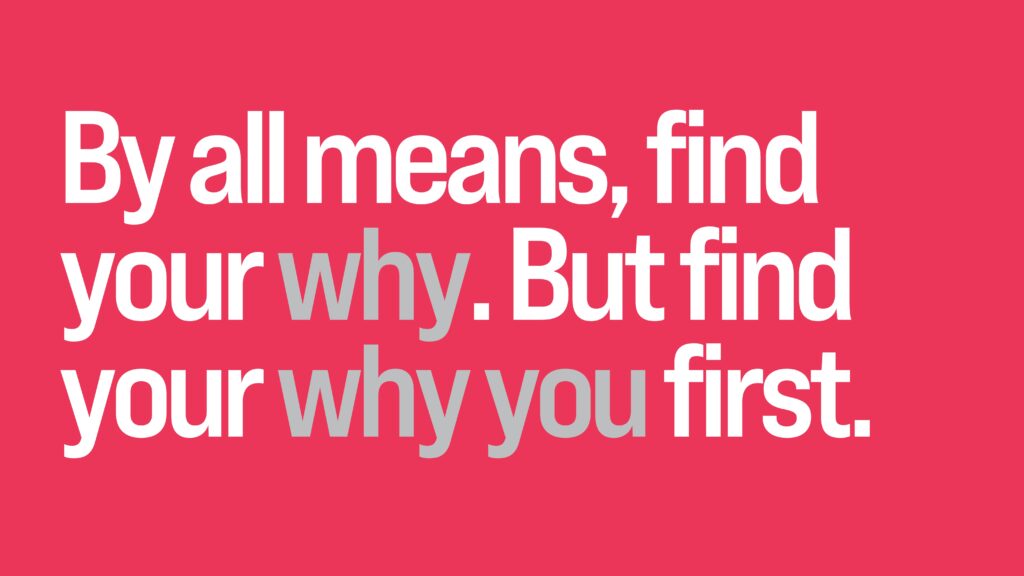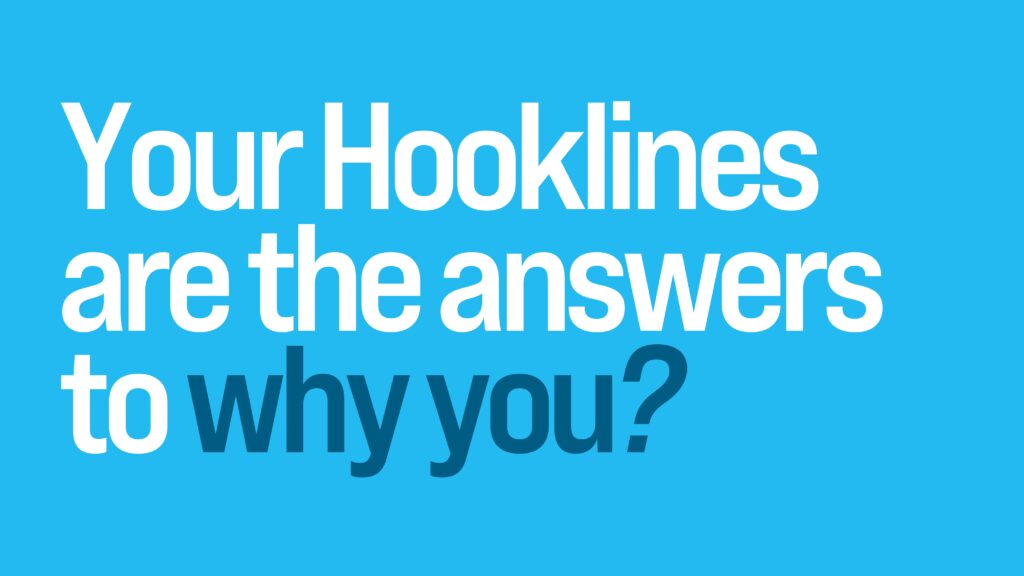
Find your why.
We’ve all heard that phrase a lot over the last decade. It’s been the title of a best-selling book, and it’s been discussed at the highest levels of management strategy.
Your why motivates you to be an elite employer and entrepreneur. It centres your mission. It informs your vision. It’s reflected in your values. Clearly articulated, your “why gets everyone on your team caring about the same things in their hearts and souls.
It sounds great. And it is.
Your prospect will never care about your why.
Or your origin story. Or your employee perks. Or how you feel about work/life balance. Or what motivates you to wake up in the morning.
They care about their problem and why choosing you to solve it will make their lives better starting tomorrow.
Your why won’t answer that question for them. Your “why you?” will.
Your “why you?” KEEPS people interested.
You’ve no doubt heard of a value proposition: a single statement that gets people interested in what you’re offering. The value proposition usually sits at the top of a website. The good ones describe the perfect future state of being:
- Slack makes it downright pleasant to work together.
- Anyone anywhere can start a business with Shopify.
- Tortuga Backpacks: Pack light. Go Further.
- Give yourself the gift of sleep in Nested Bean pajamas.
A good value proposition answers the first iteration of “why you?”: why should I pay attention to you?
If you nail that, the next question is “why should I believe you?” Now you need a different but equally compelling answer. After that, you’ll need answers for “why should I believe in you,” “why are you worth what you’re charging,” “why can I feel confident recommending you to my boss“, “why will my life be better tomorrow with you in it?” and others.
Those answers make up the best version of your story because it’s not about you.
It’s about your prospect and what life looks like when that nagging problem is out of their lives forever because you solved it for them. And it’s about being able to answer version of “why you?” along the sales cycle.
Once you’ve converted a prospect (and after you’ve delivered the goods), you can tell them anything and everything about your “why.” They’ll eat it up. They’ll tell their friends and colleagues about you. And they’ll become advocates for your brand.
But you have to get there.

That starts with the best version of your story that you can slow-play through the sales cycle and use to consistently reinforce your “why you” in what you say, write and publish.
And it continues with everyone on your team having that version of their story in their back pocket to quick-review before entering a room or writing anything for your company. Everyone hits the same points. No one goes off script or off brand. And your prospect is always front and centre.
By all means, find your why.
Have a reason to do what you do. Galvanize your team under that one rallying cry. Capture it all as a mission, a vision and set of values.
But before you do all that, invest in a set of Hooklines that gives you answers to the questions your prospects will be asking you today.
An addendum to the why vs. “why you” discussion.
Working through the Hooklines process and getting to a clear “why you” will often reveal your why. This is because, at their respective roots, they’re both addressing the problem your prospect faces. The difference is that your “why” centres you, while your “why you” centres your prospect.
